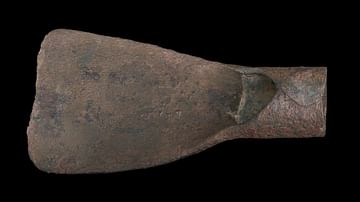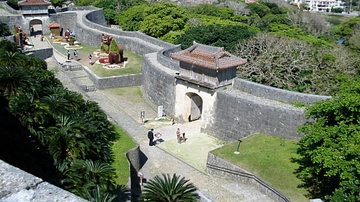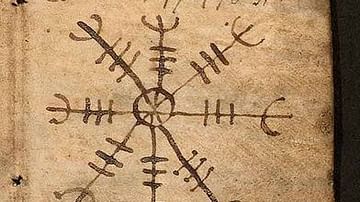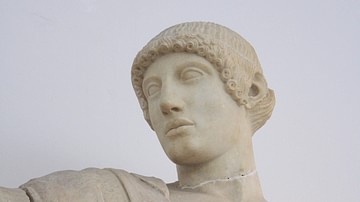Search
Did you mean: Trajan?
Search Results

Article
The Song of the Hoe
The Song of the Hoe is a Sumerian praise poem celebrating the hoe for its many uses and linking it to the creation of the world by the great god Enlil. As the economy of Mesopotamia was almost entirely based on agriculture, it is not surprising...

Article
The Ryukyu Castles of Okinawa
The medieval Ryukyu castles on the island of Okinawa, Japan are impressive testimony to the kingdom's power and wealth from the 12th to 16th century CE. Notable castles include Shuri Castle, the royal residence, and four excellent examples...

Video
How They Did It - Growing Up Viking
A history documentary on what it was like to grow up Viking. In this history documentary we explore the world of the ancient Viking Age from the perspective of a child. This is a topic that all too often gets overlooked when talking about...

Image
Viking Whalebone Plaque
Viking Whalebone Plaque, in the shape of two dragons facing each other with details added on one side of the plaque. It is also decorated with dotted circles and geometric designs. Found in a boat burial. The function of these whalebone plaques...

Image
The Helm of Awe
The Helm of Awe (Icelandic: Ægishjálmur), a magical symbol (stave) recorded in an Icelandic manuscript in the 1600s. The term is attested in the Old Norse poem Fáfnismál (1200s) in the context of the fight between the hero Sigurd and the...

Video
The Shogunate: History of Japan
A brief history of the Shogunate system of Japan.
"Eastminster"
Kevin MacLeod (incompetech.com)
Licensed under Creative Commons: By Attribution 3.0
http://creativecommons.org/licenses/by/3.0/

Definition
Norse Mythology
Norse mythology refers to the Scandinavian mythological framework that was upheld during and around the time of the Viking Age (c. 790- c. 1100 CE). Complete with a creation myth that has the first gods slaying a giant and turning his body...

Definition
Shinto
Shinto means 'way of the gods' and it is the oldest religion in Japan. Shinto's key concepts include purity, harmony, family respect, and subordination of the individual before the group. The faith has no founder or prophets and there is...

Definition
Religion in the Ancient World
Religion (from the Latin Religio, meaning 'restraint,' or Relegere, according to Cicero, meaning 'to repeat, to read again,' or, most likely, Religionem, 'to show respect for what is sacred') is an organized system of beliefs and practices...

Definition
Apollo
Apollo was a Greek god associated with the bow, music, and divination. The epitome of youth and beauty, source of life and healing, patron of the arts, and as bright and powerful as the sun itself, Apollo was perhaps the most loved of all...